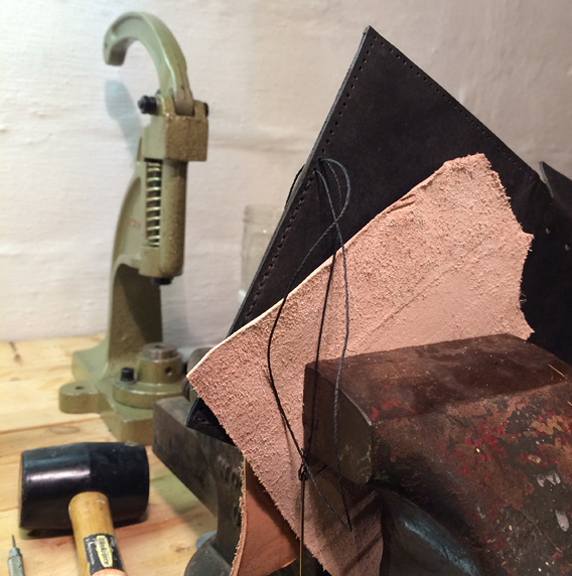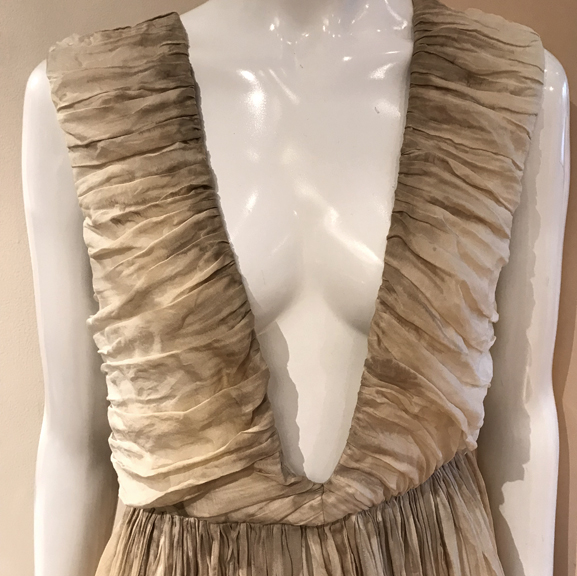“Buy less, Choose well, Make it last”
Environmental Sustainability
It’s no longer a surprise to hear that the fashion industry is wasteful. Second only to the oil industry, the fiber and textile industry is the largest polluter in the world. The EDGE compiled a list of fashion industry waste statistics that are jarring to say the least…
United Nations Climate Change News states, The fashion industry contributes 10% of global greenhouse gas emissions due to its long supply chains and energy intensive production.
Nearly 20% of global waste water is produced by the fashion industry.
Cotton farming is responsible for 24% of insecticides and 11% of pesticides, despite using only 3% of the world’s arable land.
Consumers throw away shoes and clothing [versus recycle], an average of 70 pounds per person, annually.
About 85% of this waste goes to landfills where it occupies about 5% of landfill space and the amount is growing.
Since I started designing clothing in 2004, I knew that I wanted to create clothing without contributing to these awful statistics. My first line of clothing, “Reevolution”, was created primarily from recycled textiles.
In 2004, I started my eponymous line, which incorporated natural fibers, recycled plastic canvas, and recycled textiles.
In 2015, I launched a leather goods brand, Black Spoke Leather Co. I used vegetable-tanned leather, which uses natural vegetable matter in the tanning process, rather than the harmful chemicals commonly used in tanning practices. I also dyed the leather using an ancient, natural solution comprised of vinegar and iron.
As I continue my journey as an artist and designer, I am always looking for ways to do better, and be more sustainable and environmentally friendly. A majority of my art is created from recycled materials and I am currently working on re-incorporating recycled materials into my clothing and accessories as well. I strive to be mindful of my fabric sourcing and am looking forward to being able to provide more eco-friendly fabric choices in the near future.
Created by Hand in MPLS
In November of 2012, a textile factory in Dhaka, Bangladesh started on fire, killing at least 112 workers. In April of 2013, another factory in the country’s capital city collapsed, killing 1134 garment workers. Despite the outrage at the time, very little has been done since to improve the brutal conditions of the workers that produce a majority of the clothing for the western world.
I vowed to myself before finishing school that I would never design for a company that manufactures in sweatshops. Although a vast majority of the opportunities available to me were in those types of companies, I’ve stayed true to these beliefs, even though it has resulted in a greater struggle to make ends meet. I’ve worked a variety of side gigs, including cleaning houses, shipping packages in a warehouse, manufacturing vegan cheese, slinging coffee, working retail, and pet-sitting. I learned a lot from these gigs and wouldn’t trade them for the world, but someday, I hope to make a living off of my own work and provide opportunities to others in my community.
As of right now, every single item on this website is made by my two hands in my Minneapolis, MN studio. Stay tuned for upcoming collaborations with other makers.
Art and Style and Quality for all
I remember the early days of sustainable goods. Every item looked like it was made for my parents, when they were hippies in the 1970’s. When I started making clothing, organic cottons were only available in earth tones. Times have changed and I couldn’t be happier. Any maker or company can choose to bring social and environmental consciousness into their business model, without sacrificing style. Any consumer can choose to support their ethics with their wallets.
Price is still an issue for most, myself included. By making things by hand, or by using ethical manufacturing, the labor costs more, because workers are paid a living wage. By using organic and environmentally friendly fabrics, the materials cost more, and they are not yet as readily available as their petroleum-based, chemically treated counterparts. Must you be rich to be ethical?
I watched the documentary True Cost a few years ago. This not only reinforced my disgust with the current practices of the fashion industry, it inspired me to take action. Since 2016, I have not purchased anything made in a sweatshop. This may sound bourgeois, but in reality, I pretty much just stopped buying new. Thrift stores, vintage shops, clothing swaps were where I got my clothing. I’d save up and wait for a sale to purchase ethically made underwear. By getting dressed with fewer options, I found myself getting more creative with my style.
Whenever I have a little extra cash (and my pets don’t need to go to the vet, which almost always happens when I have extra money!), I often use it to support an artist or artisan. Not only does it feel good to support someone that I believe in, handmade (and vintage things) are of a higher quality than the mass-produced items out there. They last longer, so you don’t have to replace them very often, thus reducing waste and saving money in the long run.
I also believe in alternative methods of payment, like bartering. I have exchanged goods for other handmade items, car repair, modeling and photography services. I’m always open to discussing bartering or figuring out a payment plan. I have also experimented with different methods of selling my pieces that are less capitalist, like “pay-what-you-want/can” and “time exchange” - where you pay the amount of $ that you make at your own job for the same amount of time that I spent making the piece. These methods are great for art & craft fairs, but I haven’t figured out how to set them up on this website yet. (If you know how, MESSAGE ME!!!)
Whenever I have art shows with more than a couple pieces in it, I have one piece that is titled “Just Trash/Zero Dollars” that is actually for sale for $0. I think everyone should have access to art, so I like to give it away when I can.



